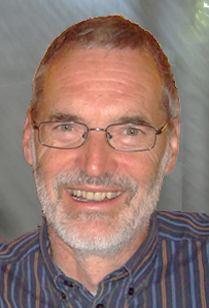Walter Schaffner
Table of contents
Mechanisms and Factors of Transcription
Since many years, our lab has been working on projects concerning the regulation of gene transcription. Earlier work focused on the structure and function of enhancers and promoters, aspects of immunoglobulin gene transcription, cell type-specific and general transcription factors, and triplet repeats in transcription factors. We described the first viral and cellular transcription enhancers and showed that polyglutamine stretches contribute to transcriptional activation.
In 1988 we identified MTF-1 (metal response element binding transcription factor, or metal responsive transcription factor). MTF-1, a zinc finger protein conserved from mammals to insects, turned out to be a key player in heavy metal homeostasis and detoxification. It specifically recognizes short DNA motifs, so-called metal response elements, in the upstream region of metal-inducible genes. A major group of target genes induced by MTF-1 are encoding metallothioneins, small cysteine-rich proteins that play important roles in metal homeostasis, metal detoxification and radical scavenging.
We have also studied MTF-1 function in the fly Drosophila and found that larvae/flies lacking MTF-1 are highly sensitive to heavy metal load (Cu, Zn, Cd, Hg). Somewhat counterintuitive was the finding that MTF-1 is also essential under conditions of copper starvation, where it helps to upregulate the gene for a copper importer (Ctr1B). Thus one and the same transcription factor activates different genes under opposite environmental conditions.
Drosophila can also be a convenient model for human diseases. We have found that food supplements with either zinc or with chelators of redox-active trace metals improve the condition of flies lacking Parkin, a protein affected in some forms of Parkinson’s disease. Furthermore, in a collaborative effort with G. Multhaup (Berlin) we have determined the degenerative effect of wild type and mutant forms of amyloid beta peptide in flies. Aggregates of this peptide, a cleavage product of the amyloid precursor protein (APP), are a hallmark of Alzheimer’s disease. Interestingly, elevated expression of MTF-1 can largely rescue the deleterious effects of the parkin mutant or of amyloid beta expression.
Using an “enhancer trap” selection system originally developed in our lab, we have recently engineered a monkey virus (SV40) such that it depends on heavy metal treatment of host cells for efficient multiplication. We have also obtained SV40 with enhancer segments from human cytomegalovirus which replicates better in human cells than the original wild type SV40. The contribution of transcription enhancers to viral host cell specificity was the last lab project, pursued until 2014.
CV
Born 26.10.1944 in Aarau, Switzerland
Diploma in Zoology with Ernst Hadorn, University of Zürich (1970)
Certificate of Molecular Biology SKMB (1974)
Ph.D. thesis in Molecular Biology with Charles Weissmann, Institute of Molecular Biology I, University of Zürich; excellency award for thesis (1976)
Group leader with Prof. Max L. Birnstiel, Institute of Molecular Biology II, University of Zürich Postdoctoral stay with Frederick Sanger, MRC Cambridge (1976)
Cold Spring Harbor Laboratory, New York (1977/78)
Assistant Professor at Institute of Molecular Biology II (1979)
Associate Professor (1983)
Federation of European Biochemical Societies (FEBS) Prize for Young Scientist (1984)
Election to Member of the European Molecular Biology Organization EMBO (1984)
Election to FEBS Lecturer (1985)
Cloëtta Prize (1986)
Full Professor and Director, Institute of Molecular Biology II (1987)
Dr.h.c. of the Medical Faculty of the University of Uppsala, Sweden (1987)
Louis Jeantet Prize of Medicine (1989)
Election to Academia Europaea (1990)
Director, Institute of Molecular Biology (I & II) (1999 - 2007)
Carus Medal of the German Society of Natural Sciences Leopoldina (1999) and Carus Prize of the City of Schweinfurt (2000)
Elected Member of the Research Council of the Swiss National Science Foundation (2002)
Member of "Faculty of 1000" Biology (2007)
2010 official retirement, but research activities continued for several years
Further activities:
Certified Lifeguard Brevet SLRG (Schweizerische Lebensrettungsgesellschaft, 1964)
Certified Birdwatch Excursion Guide (Kt. Aargau 1965)
Advisor for reptile habitats Glattalbahn (2012)
